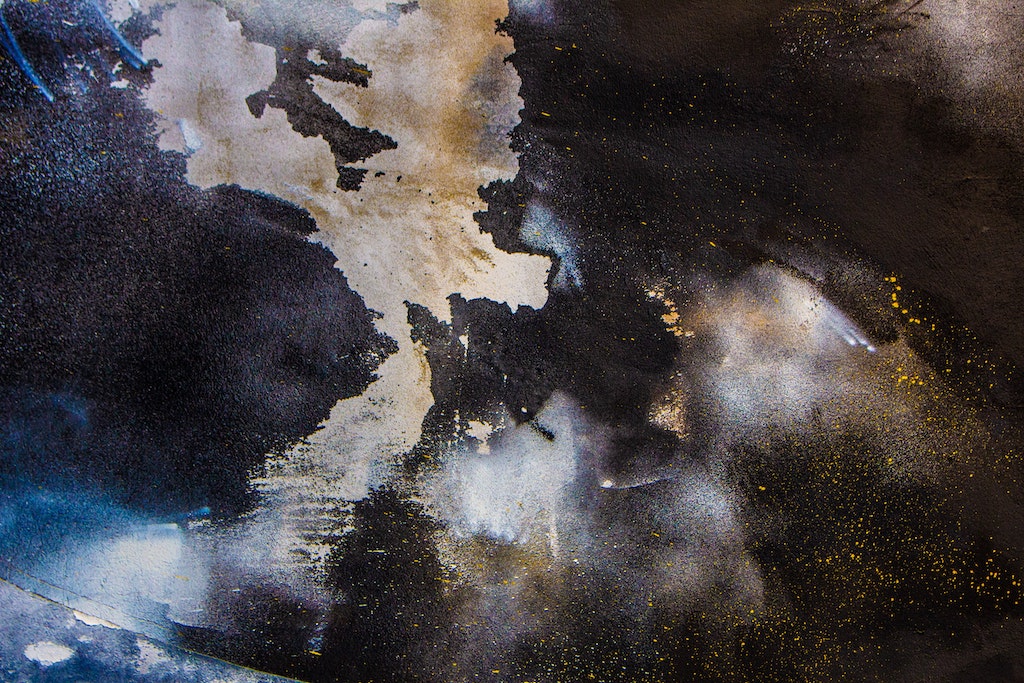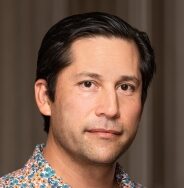After the Sheng Fiasco, Music and Arts Education Can No Longer Profess Colorblindness
The story has become so familiar it can now write itself: Professor shares racially charged material in class. Some of the most vocal and outraged students testify to their injuries and offer their indictments. Viral stories on conservative websites follow, mourning the death of free speech and the triumph of the snowflakes. Cue the anodyne statement from the university office of public affairs, affirming a commitment to equity, inclusion, and civility. Sober pundits use the precious real estate of their columns to help us discern perpetrators and victims. Everyone is miserable. It will happen again soon.
The latest sequel in this franchise took place in September 2021 when the MacArthur award-winning composer Bright Sheng screened the 1965 National Theater Company’s production of Shakespeare’s Othello at the first meeting of an undergraduate composition class at the University of Michigan’s School of Music, Theater, and Dance. Sheng wanted his students to familiarize themselves with Shakespeare’s text so that they could analyze how Giuseppe Verdi adapted the Bard’s words in his 1887 opera. The particular production Sheng chose, however, featured Laurence Olivier portraying the title role in blackface makeup, and students quickly brought their concerns to the chair of the Composition Department, complaining about Sheng’s decision to screen the film without offering any historical or political context about the film’s use of blackface. Sheng followed with a botched apology to the students that focused more on his claims of racial innocence than acknowledging the harm he had done. Class meetings were suspended for several weeks until the University announced that the Equity, Civil Rights & Title IX Office would not be conducting an investigation into the incident.
To be clear, this was a bumbling pedagogical move. Asking students to engage the formal qualities of the interpretation of Othello without attending to the blatant racism of Olivier’s performance represents a diminished understanding of art. Although Olivier’s performance was celebrated in the UK, it immediately struck a racist chord with US viewers. Reviewing the film in 1966 for the New York Times, critic Bosley Crowther expressed disapproval of Olivier’s makeup, wig, and facial gestures, all of which clearly evoked the “by-now outrageous impression” of blackface minstrelsy. Sheng, in this sense, failed students in the most basic task of creative instruction about the relationship between text and context. Immediate efforts to remedy the situation only made matters worse. The department chair treated the incident primarily as an interpersonal disagreement between a student and instructor, akin to a disputed grade. Sheng’s apology rehearsed the usual script of disavowal and innocence, followed by repentance and self-reproach.

But what the Law & Order style adjudication of the case misses is that Professor Sheng’s pedagogical decisions were both deeply flawed and entirely predictable. They reflect a mode of instruction all too common in music performance, composition, and theory (and in the fine arts more generally) in which the teaching of formal conventions and techniques upholds deeply flawed mythologies of racial colorblindness. Since the 1990s, scholars have paid greater attention to the social, political, and cultural conditions that shape musical conventions, practices, and standards of judgment. However, conservatory-style curricula, which focus more narrowly on what musicologist Susan McClary has long critiqued as “the music itself,” have been slow to change and continue to treat music as a “neutral” field that objectively arbitrates particular standards of excellence and achievement.
For example, core musicianship courses are named “keyboard skills,” “aural skills,” and “music theory,” implying a universal approach to musical cultivation. Although music curricula avoid mentioning race explicitly, they tend to prioritize certain approaches to hearing, performing, and understanding music that reinforce the cultural superiority of Western classical music. The structure of such courses compel students to fetishize formal conventions, and to imagine they can simply be cordoned off from the racialized social relations from which they emerge. This perspective is reinforced routinely when instructors spend weeks focusing on teaching students how to properly perform or analyze the works of canonic European composers, such as Handel or Beethoven, without any discussion of the colonial context that produced them. In this sense, Sheng did not betray the principles and ethics of his field. He expressed them.
In fact, most university music programs in the United States were founded in the late nineteenth and early twentieth centuries and reflected the standards and tastes of white, settler ruling elites who believed that European art and music possessed qualities separating it from that of darker-skinned, lower-class peoples. Such histories and genealogies continue to shape the dominant organization of the curriculum, instruction, and knowledge production in many programs today, including the music curriculum at Michigan. Even those areas of more critically oriented scholarship, such as ethnomusicology and musicology, which engage social and political questions directly, often remain sequestered from performance, composition, and related fields, and have troubled colonial legacies of their own. In other words, the institutions that train, hire, and tenure composers like Bright Sheng have historically promoted colorblind and powerblind understandings of music that fail to provide adequate context for students to comprehend the deep interdependence between music and racial ideology in which the dominant particulars of European music make claims to represent universal truths.
Although some have gestured towards Sheng’s Chinese background as an excuse for his inability to grasp the nuances of race in the US, such cultural explanations simply provide cover for the educational structures that reproduce and encourage colorblind understandings of music. As Mari Yoshihara details in her book about Asians and Asian Americans in Western classical music, the long history of Western classical music in East Asia, which began with nineteenth-century modernization efforts as Japan, Korea, and China sought to compete with Western powers, has not only led to an influx of Asian musicians in European and US institutions; it has also propagated myths about the artistic autonomy and the universality of Western classical music. Sheng’s training at the Shanghai Conservatory and at CUNY and Columbia—not his Chineseness—is the reason why he does not have the competencies to lead discussions about race; this training represents a failure of the dominant forms of curriculum, pedagogy, and professional socialization that characterize music and arts education more broadly.
This isn’t a matter of “inserting” race into realms where it has no business; race helps constitute the very ways we listen, create and interpret all cultural forms. Indeed, had Sheng decided to screen another adaptation of Othello that did not feature such an explicit signifier of racial meaning, and instead taught about these texts through a race-neutral lens, the students would have been failed in a different way. As Shakespeare scholar Ayanna Thompson explained to the New York Times, “Whenever you’re teaching Shakespeare, period, the history of performing race should be part of the discussion.” Although the omission of such discussions has been ongoing for decades, today’s music students have an increasingly acute sense that they do not inhabit a colorblind world and are understandably frustrated to walk into classrooms and rehearsal halls to find they have entered spaces in which race ceases to have meaning or relevance.

In truth, such incidents represent a collective failure to learn from decades of scholarship focusing on the dynamics of race and music. As early as 1963, Amiri Baraka (then LeRoi Jones) asserted that African American musical developments arose directly from lived experience, fostering Black political consciousness and responding to a shared history of racial oppression. Starting in the 1980s, scholars influenced by the work of Stuart Hall and other Birmingham School cultural theorists, have written about musical performance as a space in which cultural identities are created and transformed. Musicologists, music theorists, and ethnomusicologists, including Ronald Radano, Philip Bohlman, Guthrie Ramsey, Jr., George Lewis, Ellie Hisama, and others have explored the dynamics of race and music, offering concrete examples of what it would mean for university music programs to abandon colorblind approaches. More recently, Philip Ewell has shattered the façade of race-neutrality in music theory—a core subject in conservatory training—detailing how racial thought and prejudice have influenced foundational scholarship and calling for a re-evaluation of whose ideas and music are taught and how they are taught. Meanwhile, musicologists Naomi André, Nina Sun Eidsheim, and Matthew Morrison have explored the historic linkages between Classical music, opera, and blackface minstrelsy, studies about which Sheng or anyone else teaching a course on Verdi’s Othello could engage.
Following these scholars, new possibilities exist, but they require us to move beyond bland affirmations about tolerance and diversity. No mandatory diversity or sensitivity training is going to rectify these profound gaps. The most meaningful actions will instead address the everyday conventions of teaching, criticism, creation, and performance that are the lifeblood of all music education programs. With real support and leadership from program administrators and senior faculty, these efforts can be replicated and adapted to reimagine music education and performance studies beyond the current paradigms that continue to fail students and faculty alike. This is not a proposal to add extraneous material on race to existing curricula, but rather to move in directions that reveal how musical knowledge has been artificially distorted and limited by its investments in colorblind approaches to art from a color bound world.
Collaborations will be central to such transformations. Scholars and artists trained in the conventions of colorblind formalism will need to rely on colleagues in other fields, including musicology, ethnic studies, and others, to help broaden their pedagogical and curricular repertoire. A recent collection titled Sounding Together: Collaborative Perspectives on U.S. Music in the Twenty-21st Century, includes a dozen elegant case studies and examples of musicians, music scholars, and others exploring the ways such interdisciplinary collaborations work in practice. Our contribution to this volume describes “Music, Politics, and Race,” an undergraduate course that we co-designed and team-taught at the University of Oregon for three consecutive years, allowing us to develop a way of teaching about music as a world-making practice that participates in struggles for racial justice. Such sustained attention to race and music led to a number of new initiatives within our respective programs, including a series of teach-ins that began with performances by music students and faculty members, as well as residencies for musician-activists who led workshops, taught lessons, and lectured about socially engaged work. That the volume was co-edited by a colleague of Sheng at the University of Michigan, musicologist Charles Hiroshi Garrett, demonstrates that such collaborations are often well within our reach. Indeed, it would be exciting for faculty who did not have the benefit of such training to learn from and partner with scholars in other fields, eschewing the tired formulation of the solitary musical genius.
This way of thinking about music aspires to do more than simply diversify our curriculum or repertoire. It cuts to the heart of music’s meaning and purpose. While formalist universal approaches suggest that great music lives in a world beyond politics, history, and culture, and that we can study the text without any responsibility to broader context, a deeper engagement with music accounts for how art helps imagine and forge new possibilities and identities. The musical imagination has an important role to play in confronting the most pressing challenges of the twenty-first century, including the ongoing legacy of racism and racial inequality that sanctioned Olivier’s blackface performance in Othello in the first place. It is up to those of us in music and other programs to continue pushing for new ways of bringing important work on race and racism into dialogue with the everyday practice of artistic instruction.



